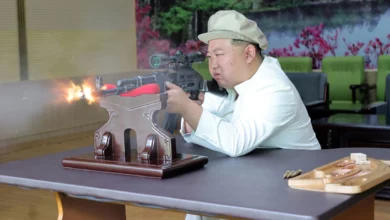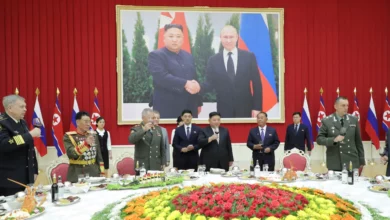
SEOUL — North Korea has resumed construction work on an experimental light water reactor (ELWR) in a move that could extend its capacity to produce more material for nuclear weapons, website 38North reported on Thursday.
Based on 30 April satellite images, work halted in December at the reactor has now re-started, said the website (http://38north.org), run by the US-Korea Institute at Johns Hopkins University and former US State Department official Joel Wit.
The construction activity comes as Pyongyang has stepped up progress toward conducting a third nuclear test, perhaps using highly enriched uranium for the first time, despite warnings from the United States and China.
"Pyongyang's construction of an ELWR — which the North Koreans have indicated is the prototype for additional reactors — as well as a uranium enrichment facility at Yongbyon, is an important indication of the North's intention to move forward with the expansion of its nuclear weapons stockpile in the future," 38North said.
It said the reactor could be operational in one to two years and that North Korea had almost completed the reactor containment building, based on the satellite images.
North Korea says it needs nuclear power to provide electricity, but has also boasted of its nuclear deterrence capacity and has traded nuclear technology with Syria, Libya and likely Myanmar and Pakistan.
It became the first country to withdraw from the Nuclear Non-Proliferation Treaty in 2003 and has denied international inspectors access to its nuclear facilities, reneging on a 29 February deal to do so after it announced plans to launch a long-range rocket, in defiance of UK Security Council resolutions.
Two paths to nuclear weapons
North Korea is not presently making any plutonium, but may be producing highly enriched uranium, according to nuclear expert Siegfried Hecker, who was shown centrifuges for use in an enrichment program by North Korea in 2010.
38North said the new ELWR, when operational, could produce enough material for an additional nuclear bomb each year.
A highly enriched uranium program running alongside this could allow North Korea to significantly increase the number of nuclear devices it could produce, giving it a dual track to nuclear weapons as the country has big reserves of uranium.
Hopes for a rapprochement between North Korea, under its new leader Kim Jong-un, and Washington were dashed by the April rocket launch, which Washington says was aimed at developing technology to mount a nuclear warhead on a missile.
Key to whether North Korea presses ahead with a third nuclear test is China, the main economic and political backer for the isolated state that is one of the most sanctioned in the world.
China chided North Korea over the rocket launch and has warned of the consequences of a third test, but unless it chooses to cut off economic aid and trade it has little leverage.
It condemned North Korea's first nuclear test in October 2006, carried out in defiance of China's public pleas, and it supported a UN resolution that authorized sanctions. It backed sanctions again after the North's second test in May 2009.
In 2003, China briefly cut off fuel to North Korea after a missile test, but it cited technical problems.
The timing of any third test is not yet clear, but satellite images have shown tunneling at the site of previous tests.
A senior official with close ties to both Pyongyang and Beijing recently told Reuters that the test could be readied soon.




